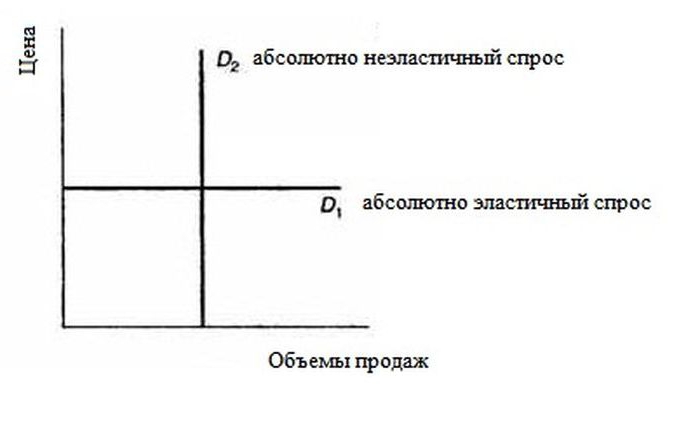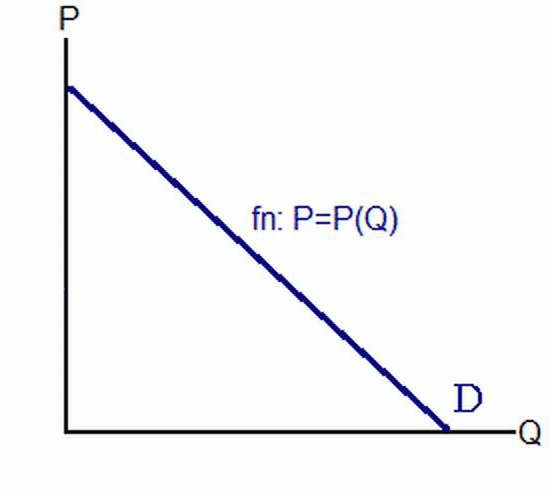The functioning of a market economy - the formation of prices for goods, the determination of production volumes and the range of products - comes from the work of certain mechanisms, the elements of which are supply and demand. The system of relations between buyers and sellers in the market is formed under the interaction of elements of market mechanisms. There are different types of demand, the variety of which depends on factors influencing its nature and magnitude. Knowledge of the classifications of solvent needs of customers helps company managers make managerial decisions.
Elasticity
Demand is a common characteristic of customer behavior. Volumes of acquisition of goods and services directly depend on their value. And the prices of goods sold and the behavior of buyers from their fluctuations determine the classification of demand by its elasticity.
The law of demand is based on the inverse ratio of the price of the good to its needs. That is, with an increase in the cost, for example, travel by taxi, the number of people who want to spend money for this service decreases.

In economic theory, the following types of demand elasticities by price:
- Sensitive (elastic) consumer behavior. The reaction of buyers to lower prices is due to a serious increase in demand. In such situation coefficient of elasticity more than 1.
- Inelastic demand is when the behavior of buyers does not change too much with a significant price shift. The coefficient of elasticity (percentage change in sales to price) is less than 1.
- Unit elasticity - a situation in which there is a uniform change in demand from price. The coefficient of elasticity is equivalent to 1.
Marginal cases
Types of price elasticity of demand can form extreme cases, which are characterized by absolutely elastic and inelastic conditions for the acquisition of goods. In the first situation, there is only one price of the good, which corresponds to a certain amount of its acquisition. The coefficient of elasticity tends to infinity, and any price fluctuation (a sharp increase or, conversely, a decrease) entails a rejection of the product or an absolute increase in demand for it, respectively.
When the price elasticity coefficient is zero, then the market position is absolutely inelastic: the price varies, and the behavior of buyers remains unchanged.
The demand function has the form shown in the graph below.

Demand functions
Any function is a dependency. The dependent position of the volume of demand on price and non-price determinants is called its function. Non-price factors affecting the magnitude of demand are population incomes, prices for other goods, preferences and tastes of customers, inflation and others. If we accept the condition that non-price factors will be constants, and the price of the goods of interest is variable, then there is a function of demand on price. It is linear, and any fluctuation in the value of the good does not affect the demand function, but only its volume changes. That is, the straight line does not change its position on the chart, its shift (to the right or left) can be due to the influence of non-price determinants.

Types of demand functions:
- The direct one is the dependence of demand on the price of the good.
- The inverse (law of demand) is the dependence of the price of a product on the amount that buyers are willing to purchase.
- One-factor functions - the dependence of consumption of goods on the income of customers.
Non-functional demand
There are situations when the behavior of buyers does not comply with the basic rule: demand rises after the price of a product decreases. Types of non-functional demand:
- The Veblen paradox is characterized by the prestigious consumption of goods that are limited in access to the masses at a high price.
- Griffin’s paradox arises when prices for low-value goods increase, and the desire to buy them from consumers does not fall due to certain circumstances. For the first time, the effect was noticed during the hungry years in Ireland: an increase in the cost of potatoes kept the product in the low-cost category and forced consumers to abandon higher-quality food products in favor of a relatively cheap vegetable.
- Irrational demand comes from the spontaneous acquisition of goods.
- Speculative need arises in conditions of shortage of goods.

Sentence
The market phenomenon, which is formed under the influence of demand, is called supply. The set of goods that manufacturers can sell at a set price determines the amount of supply. The intersection on the graph of the supply and demand functions determines equilibrium price and volume on products.
The types of supply and demand are identical in elasticity, the only difference is the appearance in practice of an absolutely elastic and inelastic supply. While the limiting cases of demand elasticity occur only in theory.

Need for product life cycle
The life phase of a product from the moment it enters the market and exits it differentiates the following types of demand for a product: potential, emerging, developing and emerging.
Potential demand - this is the maximum possible behavior of buyers, which precedes the release of products on the market. The increase in such demand is carried out through advertising.
Emerging demand arises for new products / services and depends on consumer properties Proposed by the manufacturers of the good.
The evolving behavior of buyers to acquire any good orientes the manufacturer to the approval of a new product on the market.
The formed behavior of buyers corresponds to the stage of maturity product life cycle.
Types of market demand
The sales volume of a particular brand of goods in a particular market for a specified period is called market demand.
Types of demand that characterize the situation on the market of the analyzed products:
- A negative state is expressed by the antagonism of consumers to the product. The task of the manufacturer is to determine the reasons for the negative behavior of customers to products and change the situation by adjusting prices or packaging.
- The lack of interest of consumers in the realized good or insufficient information about it can create a lack of demand in the market. Also, the reason may be the wrong place to sell products.
- Products already on the market can cause latent behavior of customers relative to their acquisition, which is characterized by the inability to meet their needs.
- Irregular demand has the feature of constantly changing over a particular period of time.
- An excessive need for good appears when there is a desire of buyers to purchase products, but there are no offers on the market from manufacturers. This condition contributes to the emergence of new products and firms. The period of excessive desire to buy goods is short-term.
- The desire of customers to purchase unhealthy products form an irrational need.

Knowledge of market demand is needed to select a target segment and market products.
Satisfaction classification
Real demand is measured by the actual volume of sales in monetary or quantitative terms. Consists of satisfied and unmet demand.
The high price, low quality or generally lack of goods on the market form an unmet need for good.This is a condition where the buyer expressed interest in the presented good, but for some reason was not happy with his purchase or, in principle, could not find him. In turn, unmet demand is:
- Explicit - appears when the buyer has the opportunity to buy a product, but it is not on sale.
- Hidden - this is when a consumer wants to buy non-existent goods. For example, mobile phones 20 years ago. People felt the desire to always stay in touch with dear people, but this was impossible due to the lack of wireless devices.
- Deferred - appears when there is a need for the accumulation of funds.

Types of demand by frequency of occurrence:
- daily, arising constantly on food;
- periodic, develops at intervals depending on the season (jackets or swimwear);
- episodic, sometimes appears, examples of goods with such demand: delicacies, jewelry.
Classification from buyer's intentions
The daily purchase of bread, fare in public transport forms a steady demand. That is, such human behavior is deliberate, planned and does not allow the replacement of the good by any other.
Unstable or alternative demand arises within a specific group of goods (cakes, confectionery) and is formed after acquainting buyers with the characteristics of the presented goods.
Spontaneous (impulsive) demand arises after the rash behavior of buyers at points of sale under the influence of advertising or display of goods. In most cases, this applies to little-known or new products.
The types and functions of demand for goods considered are an important tool for setting marketing objectives: identifying the causes of product antagonism, advertising, pricing.
